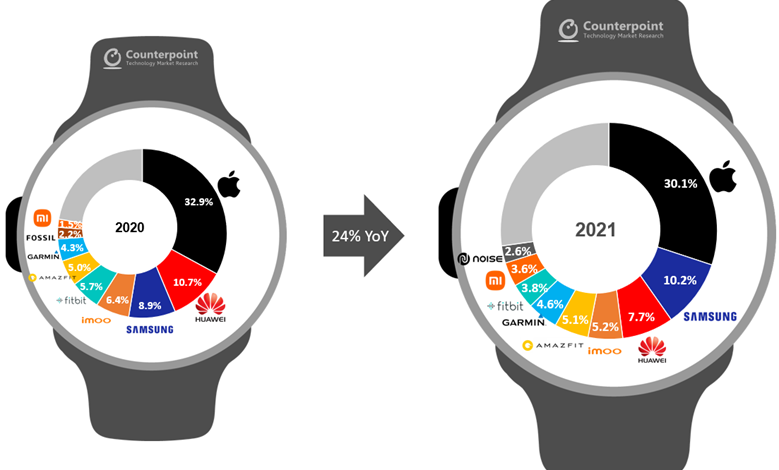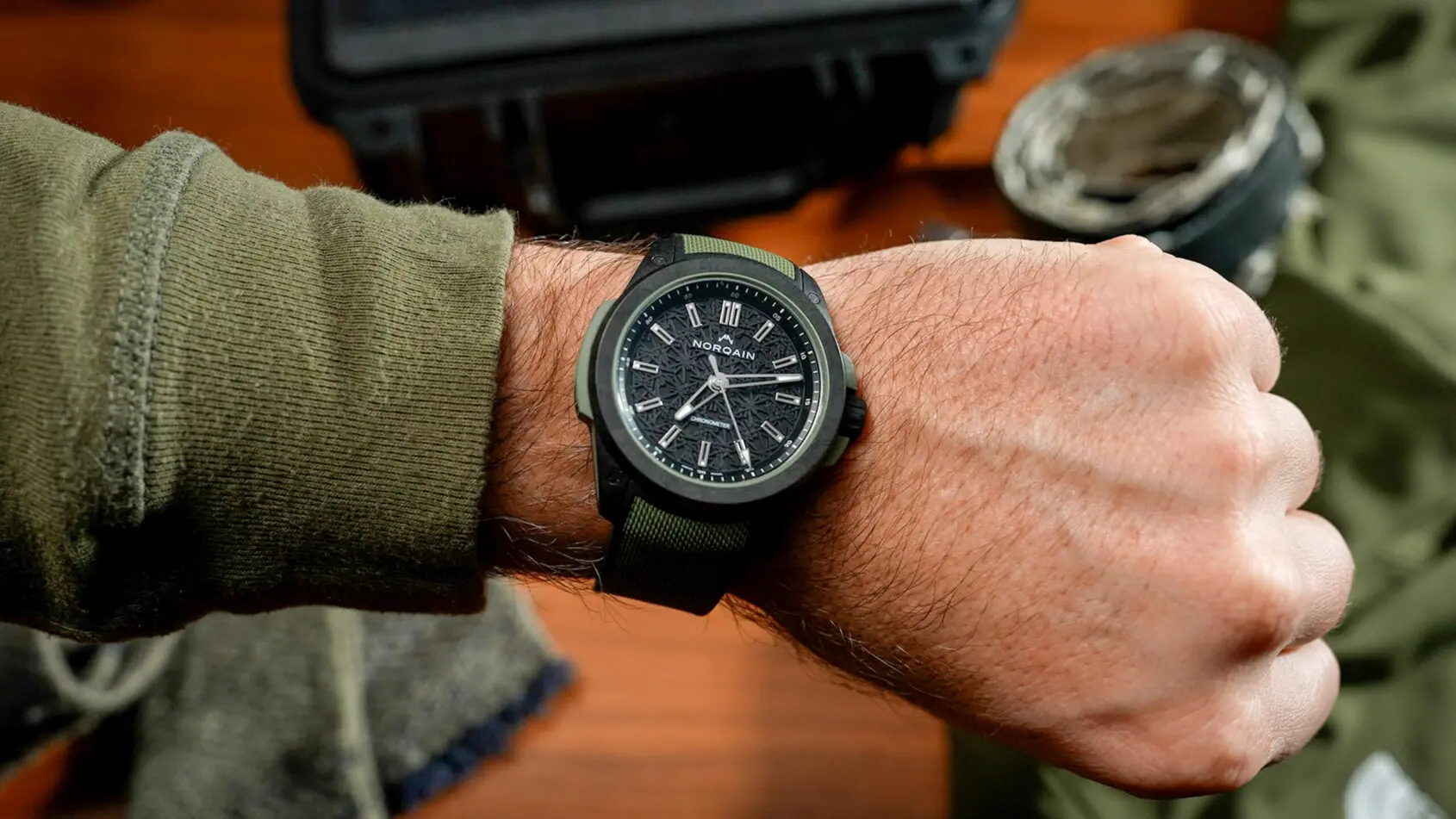Watch Trends 2024: The Future of Timepieces

Watches have been an essential accessory for centuries, serving as a functional timekeeping tool and a fashion statement. However, with the rise of technology and the emergence of smartwatches, the traditional watch industry has faced challenges in recent years.
As we look towards the future, it is crucial to understand the trends that will shape the watch industry in 2024 and beyond. In this article, we will explore the latest innovations, designs, and consumer preferences that will define the future of timepieces.
The Rise of Smartwatches

The first trend that cannot be ignored when discussing the future of watches is the rise of smartwatches. These devices combine the functionality of a traditional watch with the features of a smartphone, such as notifications, fitness tracking, and even making calls. According to a report by Grand View Research, the global smartwatch market size was valued at USD 20.62 billion in 2019 and is expected to reach USD 96.31 billion by 2027, growing at a CAGR of 19.7% from 2020 to 2027.
Advancements in Technology
One of the main reasons for the increasing popularity of smartwatches is the continuous advancements in technology. With each passing year, smartwatches are becoming more sophisticated, offering new features and capabilities. For example, the latest Apple Watch Series 6 has a blood oxygen sensor, ECG app, and an always-on retina display, making it more than just a timepiece. As technology continues to evolve, we can expect to see even more innovative features in smartwatches in the coming years.
Changing Consumer Preferences
Another factor contributing to the growth of smartwatches is the changing preferences of consumers. With the younger generation being more tech-savvy, they are more likely to opt for a smartwatch over a traditional one. Moreover, the convenience and functionality of a smartwatch make it an attractive option for many individuals. As more people embrace technology in their daily lives, we can expect to see a significant shift towards smartwatches in the future.
Impact on the Traditional Watch Industry
The rise of smartwatches has undoubtedly had an impact on the traditional watch industry. According to a report by the Federation of the Swiss Watch Industry, exports of Swiss watches decreased by 13.9% in 2020, with the decline mainly attributed to the COVID-19 pandemic and the increasing popularity of smartwatches. However, this does not mean that traditional watches will become obsolete in the future. In fact, many luxury watch brands have also started incorporating smart features into their timepieces, catering to the changing consumer preferences.
Pros and Cons of Smartwatches
To better understand the impact of smartwatches on the watch industry, let’s take a look at some pros and cons of these devices.
Pros:
- Convenience: With a smartwatch, you no longer need to take out your phone every time you receive a notification or want to check the time.
- Fitness Tracking: Many smartwatches come with fitness tracking features, making it easier for individuals to monitor their health and fitness goals.
- Customization: Smartwatches offer a wide range of customization options, from interchangeable bands to customizable watch faces, allowing users to personalize their device according to their style and preferences.
Cons:
- Battery Life: Unlike traditional watches that can last for years, most smartwatches need to be charged daily, which can be inconvenient for some users.
- Cost: Smartwatches can be expensive, especially high-end models with advanced features.
- Dependence on Technology: As smartwatches rely on technology, they may become obsolete quickly, requiring users to upgrade frequently.
Sustainability and Ethical Practices

As consumers become more environmentally conscious, sustainability and ethical practices have become crucial factors in their purchasing decisions. This trend is not limited to the fashion industry but has also extended to the watch industry. In recent years, there has been a growing demand for sustainable and ethically-made watches, leading many brands to adopt more responsible practices.
Sustainable Materials
One of the ways watch brands are becoming more sustainable is by using eco-friendly materials in their timepieces. For example, some companies are using recycled or upcycled materials for their watch straps and cases. Others are opting for sustainable materials such as bamboo, cork, or even vegan leather. These efforts not only reduce the environmental impact of watch production but also appeal to consumers who prioritize sustainability.
Ethical Practices
Apart from using sustainable materials, many watch brands are also focusing on ethical practices. This includes ensuring fair labor practices, responsible sourcing of materials, and reducing carbon footprint. Some brands have also partnered with non-profit organizations to support social causes and give back to the community. As consumers become more aware of the impact of their purchases, ethical practices will continue to play a significant role in the watch industry.
Impact on Consumer Behavior
The emphasis on sustainability and ethical practices has had a significant impact on consumer behavior. A study by Nielsen found that 66% of consumers are willing to pay more for products from sustainable brands. Moreover, a report by Deloitte revealed that 42% of millennials and Gen Z consumers consider a brand’s environmental and social impact when making a purchase. This shift in consumer behavior has led many watch brands to adopt sustainable and ethical practices to attract and retain customers.
The adoption of sustainable and ethical practices in the watch industry is not only a response to consumer demand but also a strategic move that can ultimately benefiting the brand’s reputation, sales, and contributing to a good NPS score (Net Promoter Score).
Sustainable and Ethical Watch Brands
Let’s take a look at some watch brands that are leading the way in sustainability and ethical practices:
| Brand | Sustainable Initiatives |
|---|---|
| WeWOOD | Uses recycled and reclaimed wood for their watch cases and plant a tree for every watch sold. |
| Votch | Uses vegan leather for their watch straps and donate a portion of their profits to animal and environmental charities. |
| Baume | Offers customizable watches made from upcycled materials and partners with 1% for the Planet to donate 1% of their sales to environmental causes. |
Fusion of Traditional and Modern Designs

While smartwatches have gained popularity in recent years, traditional watches still hold a special place in the hearts of many individuals. To cater to both modern and traditional preferences, we can expect to see a fusion of designs in the future of timepieces.
Classic Meets Technology
As mentioned earlier, luxury watch brands have started incorporating smart features into their timepieces. This trend is likely to continue, with more brands offering hybrid watches that combine the classic design of a traditional watch with the functionality of a smartwatch. For example, the Frederique Constant Hybrid Manufacture watch has a traditional analog display but also tracks fitness and sleep, connects to a smartphone, and has a built-in alarm.
Retro Revival
Another trend that has been gaining popularity in recent years is the revival of retro designs. Many watch brands are bringing back vintage-inspired designs, appealing to consumers who appreciate the nostalgia and timeless elegance of these styles. For instance, the Timex Q Reissue watch is a modern take on the iconic 1970s Timex Q model, featuring a simple yet stylish design.
Impact on Consumer Preferences
The fusion of traditional and modern designs caters to a wide range of consumer preferences. While some individuals may prefer the convenience and features of a smartwatch, others may opt for a classic timepiece with a vintage touch. By offering a variety of designs, watch brands can appeal to a broader audience and stay relevant in the ever-changing market.
Pros and Cons of Fusion Designs
Let’s look at some pros and cons of fusion designs in the watch industry.
Pros:
- Appeal to Different Preferences: By offering a fusion of traditional and modern designs, watch brands can cater to a wider range of consumer preferences.
- Innovation: The fusion of technology and classic design allows for innovative and unique timepieces that stand out in the market.
- Timeless Elegance: Retro-inspired designs have a timeless appeal, making them a popular choice among consumers.
Cons:
- Limited Functionality: While hybrid watches offer some smart features, they may not be as advanced as dedicated smartwatches.
- Design Compromises: In some cases, the fusion of traditional and modern designs may result in compromises in terms of functionality or aesthetics.
- Higher Cost: Fusion designs may come at a higher cost due to the use of both traditional and modern elements in the timepiece.
Personalization and Customization

In today’s world, personalization and customization have become essential for many consumers. This trend has also extended to the watch industry, with more individuals seeking unique and personalized timepieces.
Interchangeable Straps and Watch Faces
One way watch brands are offering personalization is through interchangeable straps and watch faces. This allows users to change the look of their watch according to their mood or outfit. For example, the Fossil Gen 5 Smartwatch offers over 36 interchangeable straps and customizable watch faces, giving users endless options to personalize their device.
Bespoke Watches
Another trend that has been gaining popularity is bespoke watches. These are custom-made timepieces that are designed according to the customer’s specifications. Some luxury watch brands offer this service, allowing customers to choose every aspect of their watch, from the case material to the movement and even the engravings. This level of personalization makes the watch truly one-of-a-kind and adds sentimental value to it.
Impact on Brand Loyalty
Personalization and customization play a significant role in building brand loyalty. When a customer can personalize their watch, they feel a sense of ownership and attachment to the brand. This leads to repeat purchases and word-of-mouth recommendations, ultimately benefiting the brand’s reputation and sales.
Pros and Cons of Personalization
Let’s take a look at some pros and cons of personalization in the watch industry.
Pros:
- Unique and Personalized: Personalization allows customers to create a one-of-a-kind timepiece that reflects their style and personality.
- Brand Loyalty: By offering personalization, brands can build a loyal customer base and increase customer satisfaction.
- Differentiation: In a competitive market, personalization sets a brand apart from its competitors, making it more appealing to consumers.
Cons:
- Higher Cost: Personalization may come at a higher cost, making it less accessible for some individuals.
- Limited Options: In some cases, the options for personalization may be limited, restricting the customer’s choices.
- Time-consuming: Bespoke watches require a longer production time, which may not be suitable for those looking for a quick purchase.
The Role of Social Media and Influencers

In today’s digital age, social media has become an integral part of our lives. With the rise of influencer marketing, social media has also played a significant role in shaping consumer behavior and trends in the watch industry.
Influencer Collaborations
Many watch brands have collaborated with influencers to promote their products and reach a wider audience. These collaborations often involve creating limited edition watches or customized designs in collaboration with the influencer. For example, Daniel Wellington has partnered with various influencers, including Kendall Jenner and Hailey Bieber, to create unique watch designs that appeal to their followers.
Social Media Marketing
Social media platforms such as Instagram and Facebook have become essential marketing tools for watch brands. Through visually appealing content and targeted ads, brands can showcase their products and connect with potential customers. Moreover, social media allows for direct communication with consumers, providing valuable insights and feedback that can help brands improve their products and services.
Impact on Brand Awareness
The use of social media and influencer marketing has significantly impacted brand awareness in the watch industry. By collaborating with influencers and utilizing social media platforms, brands can reach a wider audience and increase their visibility. This not only helps in promoting new products but also creates brand awareness and recognition among potential customers.
Pros and Cons of Social Media and Influencers
Let’s take a look at some pros and cons of using social media and influencers in the watch industry.
Pros:
- Wider Reach: Social media and influencer collaborations allow brands to reach a wider audience and increase brand awareness.
- Targeted Marketing: With social media, brands can target specific demographics and reach potential customers who are more likely to be interested in their products.
- Authenticity: Influencer collaborations can add authenticity to a brand’s marketing efforts, as influencers have a loyal following who trust their recommendations.
Cons:
- Cost: Collaborating with influencers and running social media ads can be expensive, making it less accessible for smaller brands.
- Lack of Control: When working with influencers, brands may have limited control over the content that is created, which can sometimes backfire.
- Short-term Results: Social media and influencer marketing may provide short-term results, and brands need to continuously invest in these strategies to maintain their impact.
Conclusion

As we look towards the future, it is evident that the watch industry will continue to evolve and adapt to changing consumer preferences and technological advancements. The rise of smartwatches, emphasis on sustainability and ethical practices, fusion of traditional and modern designs, personalization and customization, and the role of social media and influencers are just some of the trends that will shape the future of timepieces.
By understanding these trends in 2024 and the incoming years and adapting to them, watch brands can stay relevant and thrive in the ever-changing market. Whether you prefer a classic timepiece or a high-tech smartwatch, there will always be a watch that suits your style and needs in the future of timepieces.






